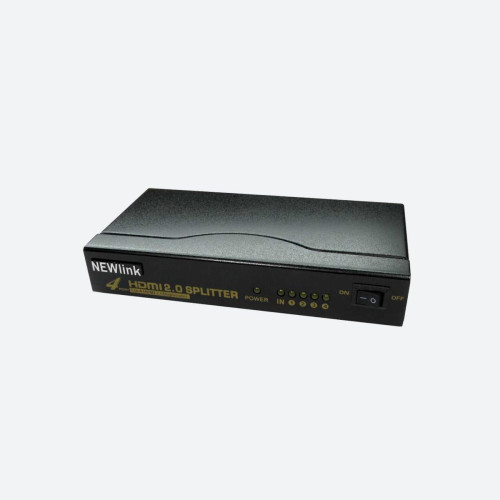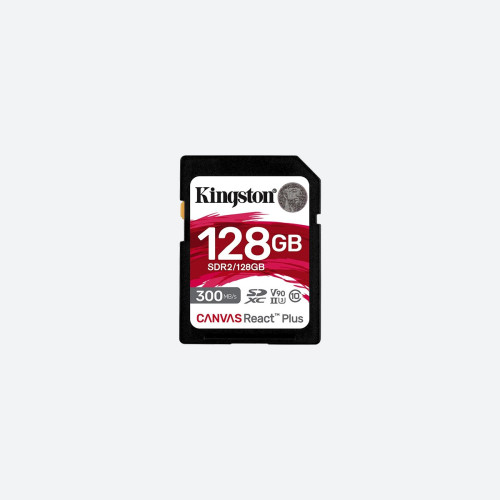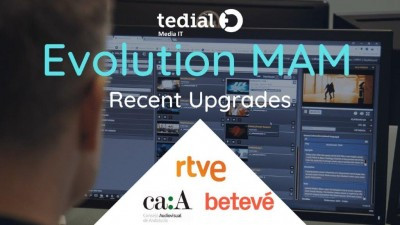by John Mills Issue 90 - June 2014
A Digital Revolution
Since the not-quite-fully-electric late nineteenth century, Television has been evolving. The first major, modern change to the way people experienced TV was when technology enabled them to decide when they were going to watch the programmes they wanted to watch. VHS recorders and then DVD players revolutionised the at-home experience of watching movies and gave people the ability to watch TV shows in box-set format, allowing for the now popular marathon watching pastime.
In this new digital age services like Sky+ and digital Freeview recorders gave people the ability to record live TV themselves, in DVD quality and watch it whenever they liked. At the same time, a new digital video content revolution was occurring in the form of portable video devices. Devices like the Archos AV series and the Apple 5th generation iPod gave consumers small screens to watch video on the go. What put these devices at the centre of a portable media revolution was the availability of music and video on websites like Apples iTunes. Not only was it a popular format with consumers, but the Digital Rights Management (DRM) imposed by Apple made the formula popular with distributors, eventually making the iTunes store the biggest digital vendor in the world.
A Location Solution
The availability of almost ubiquitous high-speed WI-FI is the foundation for the widespread availability of video on-demand (VOD) and over-the-top (OTT) streaming services. Companies like Netflix and, more recently Amazon, have developed massive online streaming libraries. With the ability to give customers better prices, availability and selection, these companies have destroyed the retail DVD rental industry. Popularity and awareness of these services has also increased due to deals made to distribute TV shows internationally. AMCs popular series Breaking Bad was made available to subscribers of Netflix U.K. the day after it was aired in the U.S. Not only did this coincide with a massive boost in the ratings for the show, but by allowing U.K. residents to watch the show so soon after its release, Netflix saw a huge boost in its own subscribers. These formulas are an effective monetisation of TV shows and also more than likely reduce the amount of illegal downloading. They are also a modern industry growth cycle. As the show becomes more popular, so does the video platform and vice versa.
These types of social developments have caused a creative destruction of the home-video industry into a completely online infrastructure. The speed of the internet and the availability of low-cost tablets and mobile devices have resulted in a second major change to consumer video. Not only do consumers want to watch video when they want to watch it, they also want to watch it where they want.
Tablet sales are widely predicted to outpace laptop sales by the end of 2015 and many people buy them instead of a second TV, as a more affordable, more portable entertainment solution. The lines between mobile phones and tablets are also blurring, as 5 inch, high definition screens become the norm amongst manufacturers.
A Mobile Evolution
With the release of 4G mobile internet, more mobile phone users are watching video on their handsets. A study by Strategy Analytics found 72% of mobile users in the U.S, China, France, Germany, Spain and the U.K regularly watched video on their devices. Widespread 4G coverage has given users the ability to stream video reliably, without the need to wait for long buffering times. This fact alone has given mobile network operators a reason to get their customers to upgrade to 4G. At the moment, however, the network operators do not have a great deal in terms of video content to offer. So for customers who already subscribe to OTT services like Netflix, 4G availability is great, but how will operators encourage those users who are not already subscribers to migrate to new technology?
Historically mobile live TV was difficult to achieve, primarily due to the lack of bandwidth available, even on 3G. Streaming live TV to an individual device was possible, but connecting several hundred thousand devices simultaneously would overload the network. This is also a problem when viewing catch-up TV through current apps. It works fine on one device, but in a crowded stadium or a busy shopping centre and it just will not work. Cloud driven approaches to live streaming, catch-up TV, OTT and VOD, along with the availability of 4G speeds on any device with a data connection is making mobile live TV a reality. What is more, for mobile network operators it is essential to demonstrate the fundamental difference that 4G offers a consumer. Currently user behaviour on 4G is identical to 3G mostly web browsing and social media. Only when video and mobile TV is added to operators portfolios, does 4G come into its own.
Developments in cloud technology allow TV to again be brought to a mass market and not one restricted to living rooms. Sky has put a massive investment into the infrastructure behind their Sky Go service, which is designed to offer just this. Unfortunately the release of Sky Go onto the cross-range of mobile device platforms did not go as smoothly as planned, particularly on Googles Android tablets. For a mobile TV service to really take off and capture a widespread audience quickly it is essential that it works effectively on the myriad of iOS and Android devices that dominate tablet and smartphone sales. Users want to be able to access video content from anywhere and everywhere. They want to watch part of the programme on the train on the way to work, part of it on the way home and the rest when they get home. Effective time management.
Adding Television as a driver of customer loyalty
Mobile TV is about to take off in a big way. Network providers offering TV services can quickly enjoy increased brand loyalty and reduced churn rates. Traditionally mobile operators have experienced churn rates as high as 30%, effectively meaning the companies need to generate significant growth in subscriptions just to stand still. But adding a television service to either a broadband or mobile offering sees churn rates plummet. The huge popularity of mobile video gives network operators the opportunity to seriously focus on content and increase customer loyalty.
The traditional difficulty for providers in doing so is the cost and time television was complicated to roll out. It required deals with content providers, huge investment in infrastructure, it was expensive and took years to get right.
This is changing. Vision247s Perception¢ enables a service provider to set-up a cloud based, live streaming and VOD service in as little as 16 weeks. It is designed for service providers, cable operators, mobile operators and content owners seeking to offer on-net, OTT and mobile TV services, easily and cost effectively. The same reliable and stable stream can be delivered to Smart TVs, Set-top-boxes, tablets, smartphones and PCs, through one single platform.
Service providers can brand their TV service, increasing customer loyalty to their own products and brands. For mobile network providers, operating this kind of service also gives them a means of encouraging their customers to upgrade to 4G, as there will be a real, tangible benefit in doing so. Whether the providers charge their customers more for the service or include it as part of their 4G proposition, will depend on a combination of content, accessibility and availability, but service providers can offer elements free with upgrades for premium content and Pay Per View for major events.
Cloud computing enables service providers to offer a personal video recorder to customers, so they can record programmes to the Cloud and stream them at a convenient time. This is likely to be the future of all content recording accessible everywhere and at any time, via multiple devices.
Conclusion
The combination of faster fixed, wireless and mobile networks with the availability of on demand storage offers enables any service provider, from ISP to mobile network, to seriously consider TV as an added service. With a content hungry consumer market looking for new ways to be entertained, and services like Perception¢ making mobile live streaming TV a reality, the world of television is being democratised more than ever before. Once again, TV is evolving, only this time it is happening on a bus, a train or on a park bench.





























